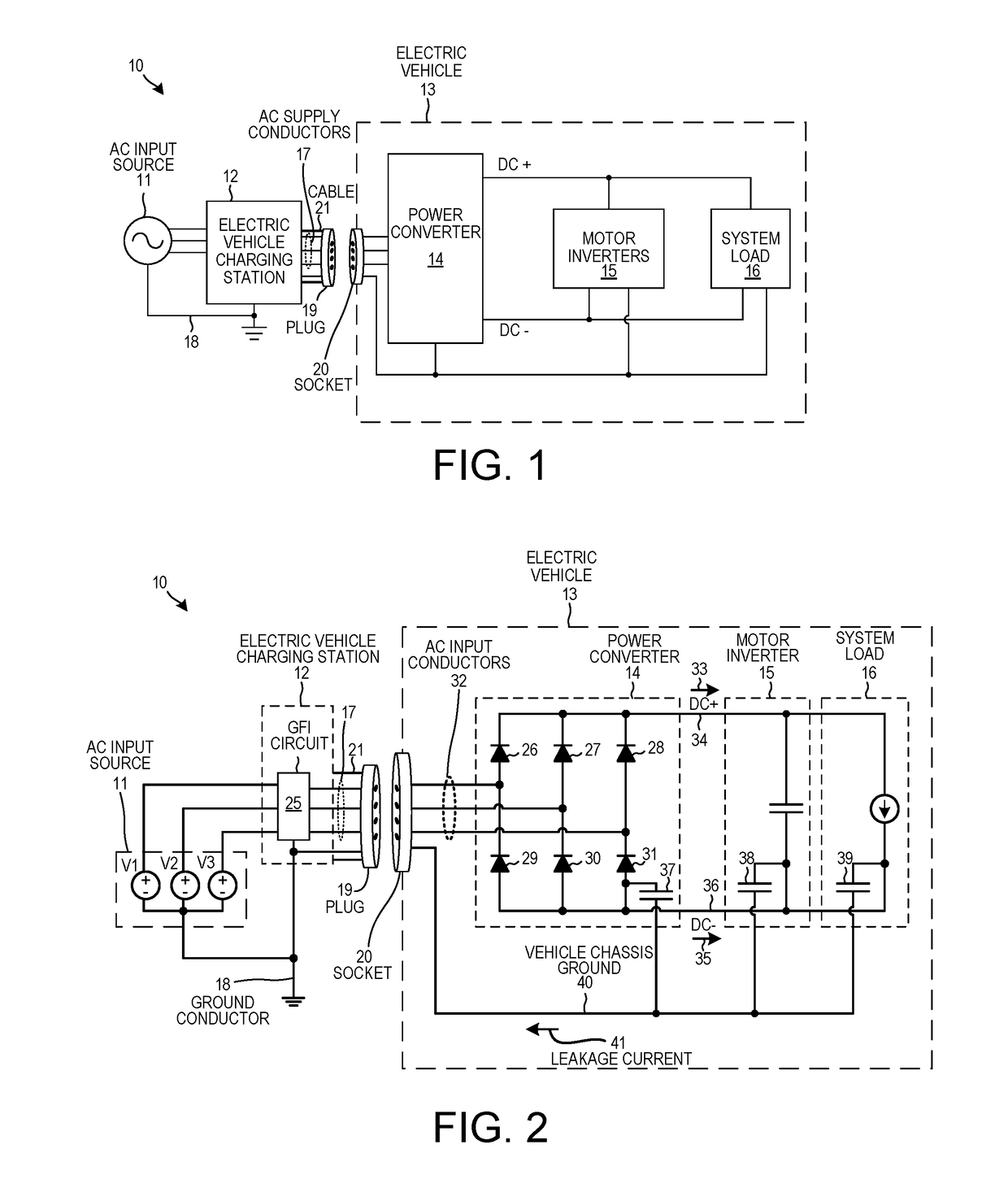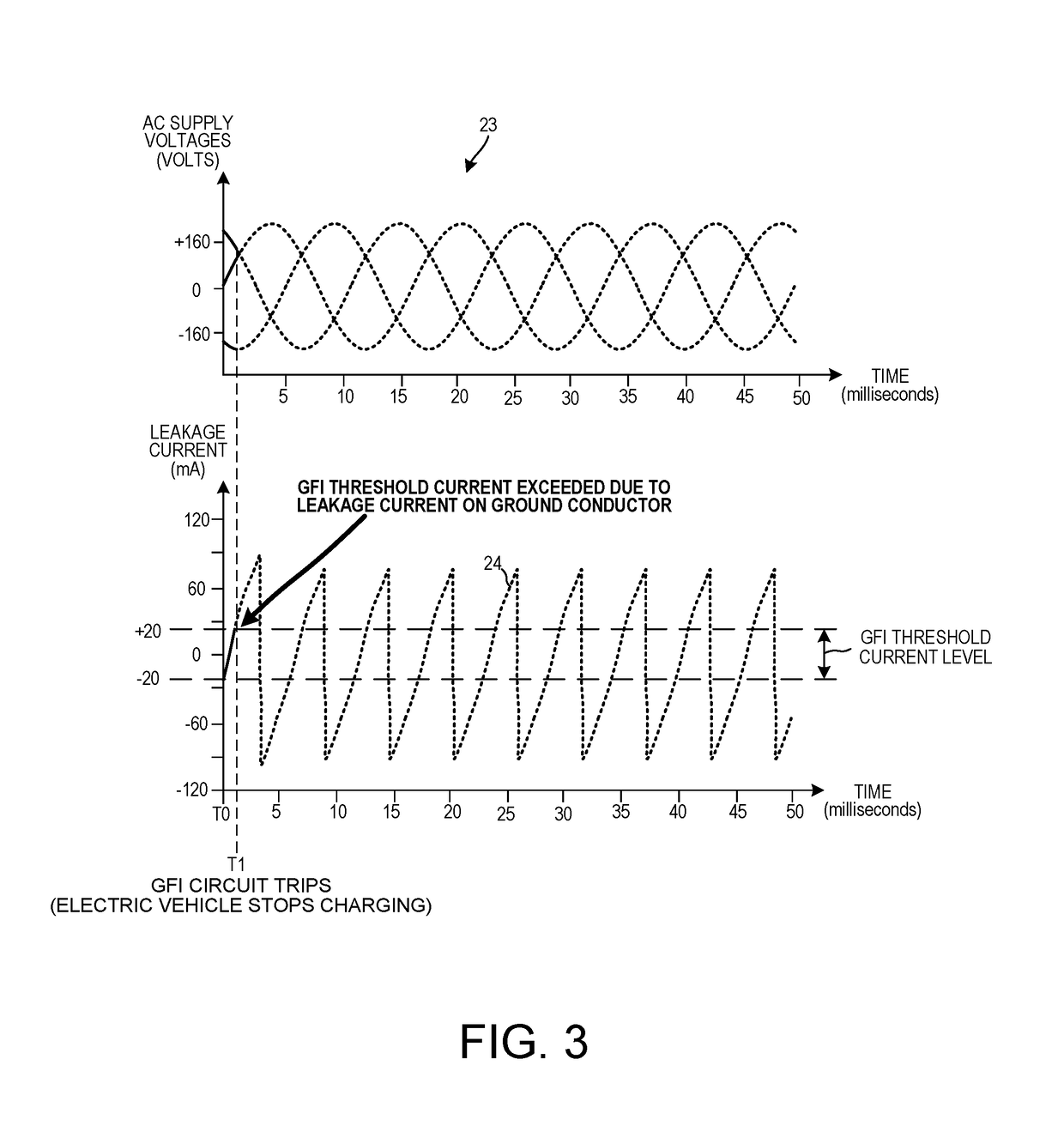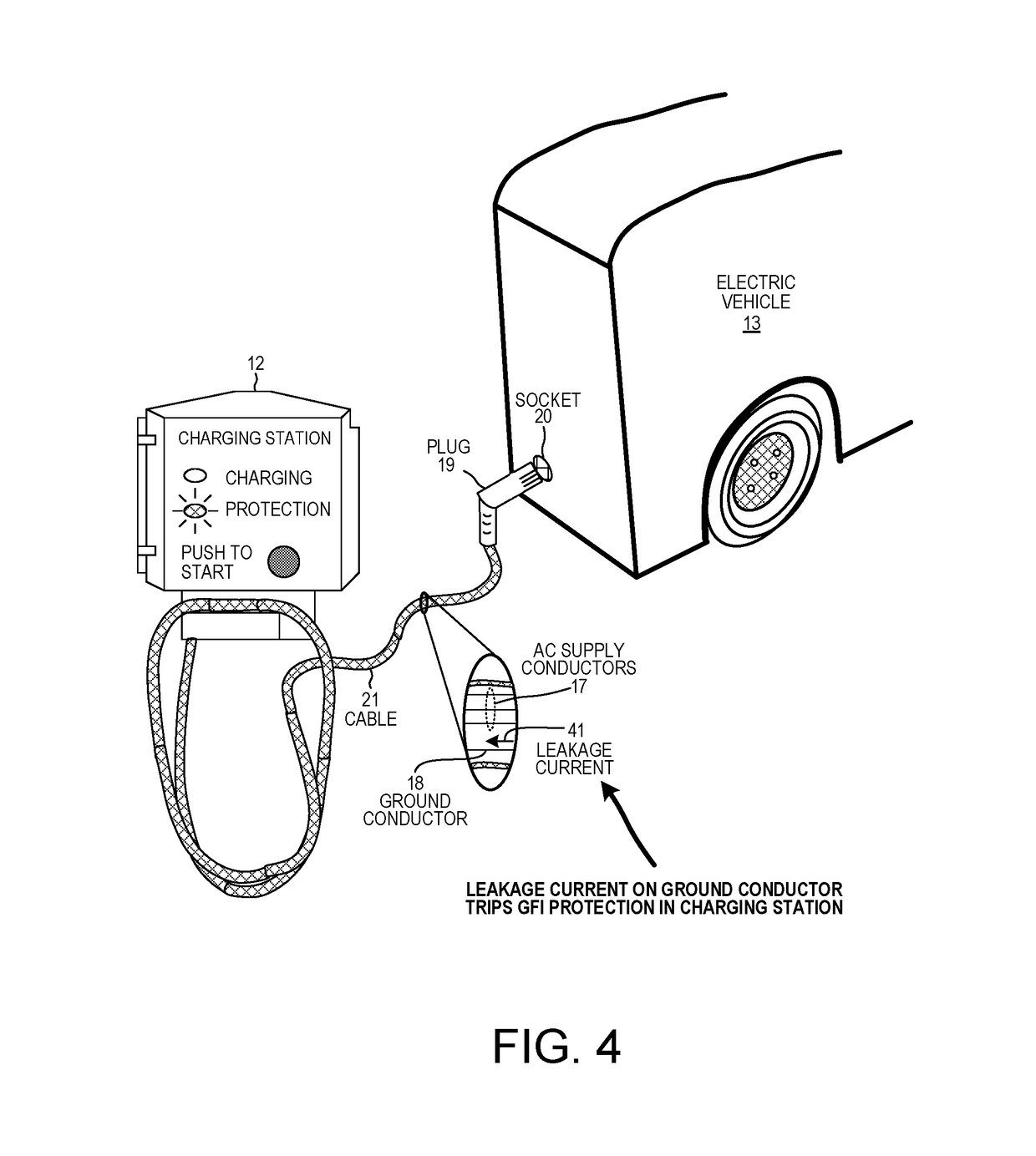Generating leakage canceling current in electric vehicle charging systems
a technology of electric vehicle and current canceling current, which is applied in the direction of electric variable regulation, process and machine control, instruments, etc., can solve the problems of undesirable leakage current flowing on the ground node, low common mode capacitance of vehicle circuit, and difficult to achieve some vehicle designs, so as to reduce the number of circuit components and complexity, and the effect of easy installation
- Summary
- Abstract
- Description
- Claims
- Application Information
AI Technical Summary
Benefits of technology
Problems solved by technology
Method used
Image
Examples
Embodiment Construction
[0052]Reference will now be made in detail to some embodiments of the invention, examples of which are illustrated in the accompanying drawings.
[0053]FIG. 1 is a high level diagram of an electric vehicle charging system 10. Electric vehicle charging system 10 includes an Alternating Current (AC) input source 11, an electric vehicle charging station 12, and an electric vehicle 13. In this example, electric vehicle charging station 12 is a CS-100 electric vehicle charging station available from ClipperCreek, Inc., located at 11850 Kemper Rd. #E, Auburn, Calif. 95603. In another example, electric vehicle charging station 12 is an Evr-Green 400 Electric Vehicle Charging Station available from Leviton Mfg. Company Inc., located at 201 North Service Rd., Melville, N.Y. 11747. The electric vehicle 13 comprises a power converter 14, motor inverters 15, and a system load 16. Many additional components involved in the structure and operation of electric vehicle 13 are excluded for explanatory...
PUM
 Login to View More
Login to View More Abstract
Description
Claims
Application Information
 Login to View More
Login to View More - R&D
- Intellectual Property
- Life Sciences
- Materials
- Tech Scout
- Unparalleled Data Quality
- Higher Quality Content
- 60% Fewer Hallucinations
Browse by: Latest US Patents, China's latest patents, Technical Efficacy Thesaurus, Application Domain, Technology Topic, Popular Technical Reports.
© 2025 PatSnap. All rights reserved.Legal|Privacy policy|Modern Slavery Act Transparency Statement|Sitemap|About US| Contact US: help@patsnap.com



